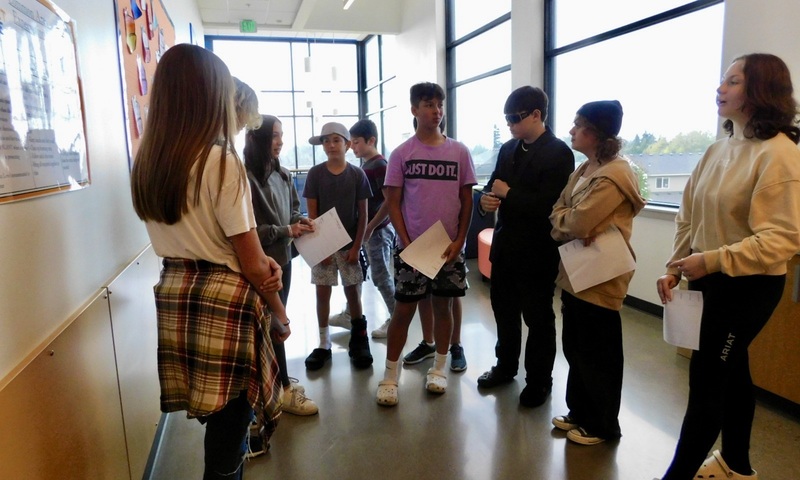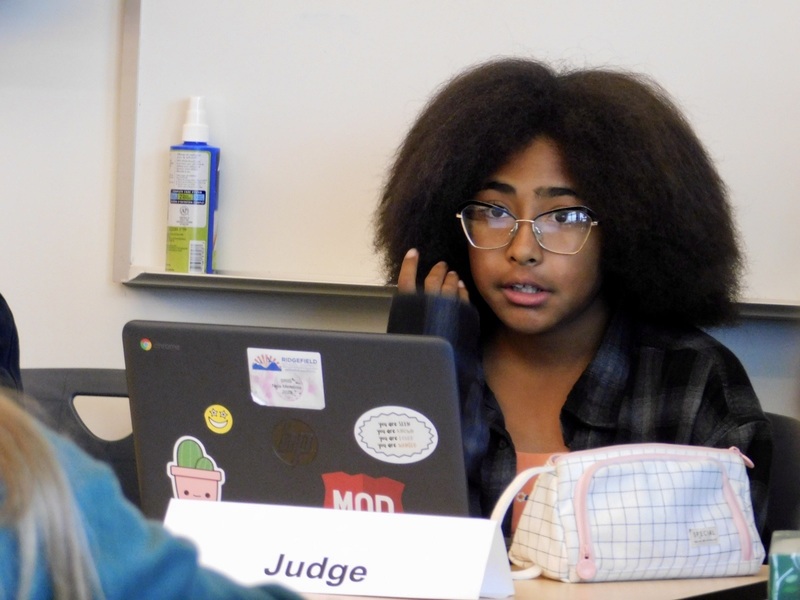How do you bring history to life? At View Ridge Middle School, history teacher David Jacobson’s Washington history class has taken a 175-year-old event and put its participants on trial. With randomly assigned courtroom roles, the Ridgefield School District students become judge and jury, prosecution and defense, bailiff and witnesses. As they research their parts, students gain new insight into both historic and present-day views of what happened on November 29, 1847.
\r\nThe event they are debating is the Whitman Massacre (also known as the Tragedy at Waiilatpu). Marcus Whitman, a missionary to the Pacific Northwest, and 12 others were killed by members of the Cayuse tribe, who accused Whitman of poisoning hundreds of tribal members in his care.
\r\nAt the mock trial, bailiff Ty Russin asked everyone to rise as Judge Naia Mendiola entered the courtroom. The students on the jury listened intently as prosecutors and defense attorneys made their opening statements. Then one by one, witnesses gave their testimony.
\r\nAfter careful questioning by both sides, the story slowly emerged that Whitman’s medical practice had been unable to combat the deaths of as many as 200 tribal members. Witnesses testified that Whitman knew of a tribal tradition requiring doctors who practiced bad medicine to be put to death. Whitman and twelve others had been attacked and killed as a result. In the end, Chief Tiloukaikt, Chief Tomahas, and three other men surrendered to authorities.
\r\nThe prosecution asked that Chief Tiloukaikt be charged with the murder of over a dozen people, including Whitman. The defense argued that Tiloukaikt was simply following tribal law and had at most committed manslaughter.
\r\nThe jury adjourned to the hallway to discuss the case. Several members debated whether statements made by witnesses impacted their final decision. After reaching agreement, the jury filed solemnly back into the classroom. Judge Mendiola asked if the jury had reached a unanimous verdict; they had. In this trial, the jury found defendant Chief Tiloukaikt guilty. “We’re going to appeal,” the defense announced immediately.
\r\nAfter the mock trial was complete, jury members explained they had based their decision on the information they were given that day; the prosecution had led a strong cross-examination of witnesses. Jacobson asked them what went well during the mock trial and what could improve for next time. They wouldn’t have to wait long to put those changes into action, he said, because they would be doing the same mock trial the next day—but with everyone switching sides.
\r\nThe classroom buzzed as students started creating strategies for their new roles. After their first experience in mock court today, they’d all be better informed and prepared for the retrial tomorrow.
\r\nJacobson hopes that by studying both sides of an issue, his students will learn to move beyond rote memorization of dates and facts to critical thinking and deeper analysis. As students discuss historical events from multiple perspectives, they achieve a different understanding of how these events are contextualized—and learn skills that can be applied across multiple disciplines. But for now, Jacobson is proud of how his students handled the mock trial. “They did a pretty great job for their first time,” he says, smiling. “Can’t wait to see how they do tomorrow!”
\r\n


